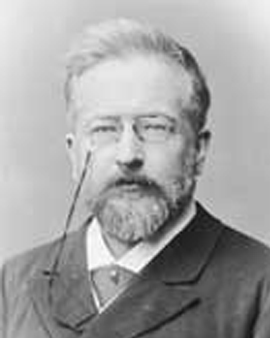Emil Jakob Schindler was born into a family of factory owners. Contrary to the customs of the time, however, the young Emil decided against a military career. He wanted to become an artist rather than an officer. So he enrolled at the Academy of Fine Arts in Vienna. There he studied under Albert Zimmermann. Already during his studies he focused on landscape painting, he was particularly fond of the Dutch masters. He also cultivated a close friendship with Hans Makart. However, he did follow one convention: as was customary at the time, he went on study trips through Europe. In the process, he visited not only Holland and Dalmatia, but also Venice. This time left a lasting impression on him and his work. Schindler is particularly known for a series of peasant garden paintings, which are characterized by incredible detail and an extraordinary close-up view. Some say their depiction of the everyday reminds them of his fellow painter Ferdinand Georg Waldmüller. However, the influence of French realism is also clearly recognizable.
Works of the Austrian painter and draftsman have been successfully represented in international art auctions for many years. For example, the painting "View of Ragusa" at an auction in Vienna auction house Dorotheum brought no less than 317,500 euros. No wonder, because today Schindler can undoubtedly be considered one of the most outstanding artists for Austrian mood painting and landscape depiction. But even during his lifetime, Schindler was highly esteemed. This is shown, for example, by a commission he received from none other than Crown Prince Rudolf: Schindler was allowed to illustrate "The Austro-Hungarian Monarchy in Words and Pictures". He also received many awards for his artistic achievements. Among other things, he received the Golden State Medal and the Reichel Artist Prize, endowed with 1,500 gulden. This not only eased his eternally strained financial situation and made it possible for him to move into a larger apartment. It also ensured that students flocked to him in large numbers, including the likes of Carl Moll and Tina Blau.
Unfortunately, Schindler was not able to enjoy the peak of his success. He died of the consequences of an appendicitis on Sylt, far away from home. The domestic art world not only memorialized him with a grave of honor in Vienna's Central Cemetery. Schindler is also represented by a sculpture in the Vienna City Park - also designed by the sculptor Edmund Hellmer. In addition, an alley in Vienna-Währing was named after the artist. Not only the artistic work of Emil Jakob Schindler is important for art history, but also his private life. In 1879 he married the singer Anna Sofie Bergen. And she was none other than the mother of Alma Mahler Werfel, who later caused a furor and many a scandal as the wife, lover and leisure of numerous artists. Perhaps Emil Jakob Schindler turned over in his grave of honor ...
×





.jpg)
.jpg)
.jpg)
.jpg)
.jpg)
.jpg)
.jpg)
.jpg)
.jpg)
.jpg)
.jpg)
.jpg)
.jpg)
.jpg)
.jpg)
.jpg)
.jpg)
.jpg)
.jpg)
.jpg)
.jpg)
.jpg)
.jpg)
.jpg)
 - (MeisterDrucke-653669).jpg)
 - (MeisterDrucke-653669).jpg)
.jpg)
.jpg)
.jpg)
.jpg)
.jpg)
.jpg)
.jpg)
.jpg)
.jpg)
.jpg)
.jpg)
.jpg)
.jpg)
.jpg)
.jpg)
.jpg)
.jpg)
.jpg)
.jpg)
.jpg)
.jpg)
.jpg)
.jpg)
.jpg)
.jpg)
.jpg)
_-_(MeisterDrucke-1344907).jpg)
_-_(MeisterDrucke-1344907).jpg)
.jpg)
.jpg)
.jpg)
.jpg)
.jpg)
.jpg)
.jpg)
.jpg)
_-_(MeisterDrucke-1584940).jpg)
_-_(MeisterDrucke-1584940).jpg)
.jpg)
.jpg)
.jpg)
.jpg)
.jpg)
.jpg)
.jpg)
.jpg)
.jpg)
.jpg)
.jpg)
.jpg)
.jpg)
.jpg)
.jpg)
.jpg)
.jpg)
.jpg)
.jpg)
.jpg)
.jpg)
.jpg)
.jpg)
.jpg)
.jpg)
.jpg)
.jpg)
.jpg)
_-_(MeisterDrucke-1633512).jpg)
_-_(MeisterDrucke-1633512).jpg)
.jpg)
.jpg)






